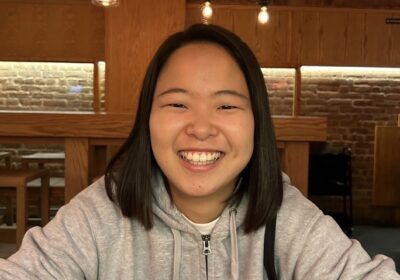Battling the winter blues
You’re sitting in your cold dorm room alone. The lights are turned off and the blinds are blocking the “it’s snowing” view. A pile of homework sits on your desk, untouched. Just the thought of how much you have to do sickens you.
You pull your knees to your chest and hug them. Your eyes are empty but your head is bouncing to every worst-case scenario. You take a few deep breaths but that only leads to sucking in cold, hard air. Your mind sounds like white noise, all too much to handle at once.
Closing your eyes only leads you to your own personal hell, so you focus them on the blank white wall in front of you. The emptiness of the wall strikes you and makes your mind bounce to loneliness. You put your head down on your knees.
A single tear falls and stains your left cheek.
Before you can take another deep breath of choking, cold air, you begin to sob. The tears fall quick and your heart feels like it stopped completely. All you hear is the emptiness of your dorm, not even the furnace sang to you.
You begin to feel dizzy and decide to curl up under the covers. The sheets are ice cold and your pillow feels like a rock. You lie down and pull your knees to your chest again.
Your eyes are sore and your muscles feel weak. You close your eyes to ignore the emptiness of the room. Your thoughts are slowly fading as you drift off into sleep.
Winter depression or Seasonal Affective Disorder (SAD) is not unknown on a college campus. With the roller coaster winter we’ve been having, who wouldn’t feel even a little depressed?
According to bates.edu, SAD affects people because of a “biochemical imbalance in the brain resulting from shorter daylight hours and lack of sunlight.”
Some signs of depression could be: decreased mood and low energy level, difficulty waking up in the morning, irritability, anxiety, inability to concentrate, difficulty performing tasks that are usually enjoyable, low sex drive, and carbohydrate craving.
Unfortunately, winter depression isn’t where it ends. It could always build up and lead to something even worse.
Suicide.
According to psychcentral.com, suicide is the second leading cause of death on a college campus.
Luckily, Castleton is aware that some of their students get hit with the winter blues and give us time to recoup and relax with a break every five weeks. Castleton also provides us with help at the Wellness Center, if needed.
“I will usually exercise. It just puts me in a more positive mood,” Callie Ginter said.
The most common treatment for the winter blues is an antidepressant or psychotherapy. Though, it can also be fixed by taking vitamin D, daily.
So if you’re feeling hopeless and blue, don’t worry, spring is just around the corner with warmer weather and happier days.








